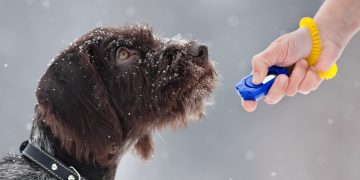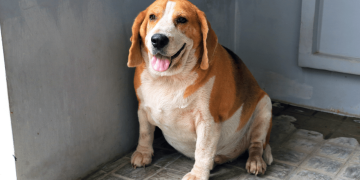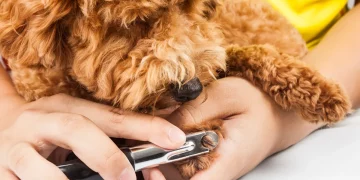The High-Spirited Nature of Canines and the Risk of Eye Injuries
In the boundless tapestry of a dog’s play, where curiosity reigns, it is not uncommon for these spirited creatures to acquire the occasional bruise, with the eyes being particularly vulnerable. In the throes of boisterous play, an energetic chase through dense undergrowth, or a fervent excavation in the backyard, even the most well-mannered canine may succumb to eye injuries.
As a guardian of such a playful spirit, acquainting yourself with the myriad forms of eye injuries is a fortifying pillar of pet care. Recognizing when a blunt trauma to the eye necessitates immediate veterinary intervention is critical, particularly when the dog’s vision is under siege.
Recognizing the Spectrum of Canine Eye Injuries
Eye injuries in our furry companions can present a variety of symptoms, ranging in severity from mild to grave. These conditions can be efficiently diagnosed via a suite of straightforward tests by your trusted veterinarian. A gamut of common ocular afflictions includes corneal lacerations, insidious ulcers birthed from chemicals or rough debris, puncture wounds from adventitious objects, eyelid trauma, or even proptosis—a distressing displacement of the eye from its orbit.
Signs Your Dog May Exhibit Following an Ocular Injury
Should your dog bear witness to an array of symptoms such as persistent squinting, spasmodic eyelid tremors, incessant pawing at the eye, rapid blinking, or an overflow of tears, these could herald an ocular injury. A reluctance or inability to fully open the eye, coupled with a conspicuous redness within the whites of the eyes, may point to an underlying trauma or irritation. Moreover, disquieting discharges of yellow or green, a clouded gaze, dilated pupils, and a notable sensitivity to light are all potential indicators of ocular distress.
Navigating the Occurrence of Eye Injuries in Dogs
Eye injuries can spring from countless encounters. A playful tussle, the swipe of a feline’s claw, or an inadvertent kick from a larger animal can easily imperil a dog’s eyes. The natural world presents its own hazards, from twigs to insects, whilst a beloved head-out-the-window car ride can unwittingly invite airborne irritants. The domestic sphere is not without risks, with sharp corners and protruding objects standing as sentinels for potential harm. Allergies and irritation, if left unchecked, can prompt behaviors that exacerbate ocular damage, such as vigorous scratching or rubbing that leads to corneal ulcers.
Immediate Steps and Veterinary Care for Eye Injuries
Upon the suspicion of an ocular injury, your immediate recourse should be to seek veterinary care. In cases where home first aid is sanctioned by your veterinarian, actions like gentle eye rinsing or the application of cold compresses may be advised. Utilizing sterile saline eyewash—distinct from contact lens solutions—is paramount; and this delicate endeavor must be approached with soft care, perhaps with the aid of another to soothe and steady your pet.
Ensure a safe space, be it a bathroom floor or a countertop, for administering first aid, one conducive to both pet comfort and easy cleanup. The procession to professional care will involve a detailed inquiry into the injury and a succession of examinations, gauging tear production, uncovering abrasions, and measuring intraocular pressures. Depending on the gravity of the diagnosis, the spectrum of remediation spans from simple medicated drops to the possibility of surgical interventions.























































